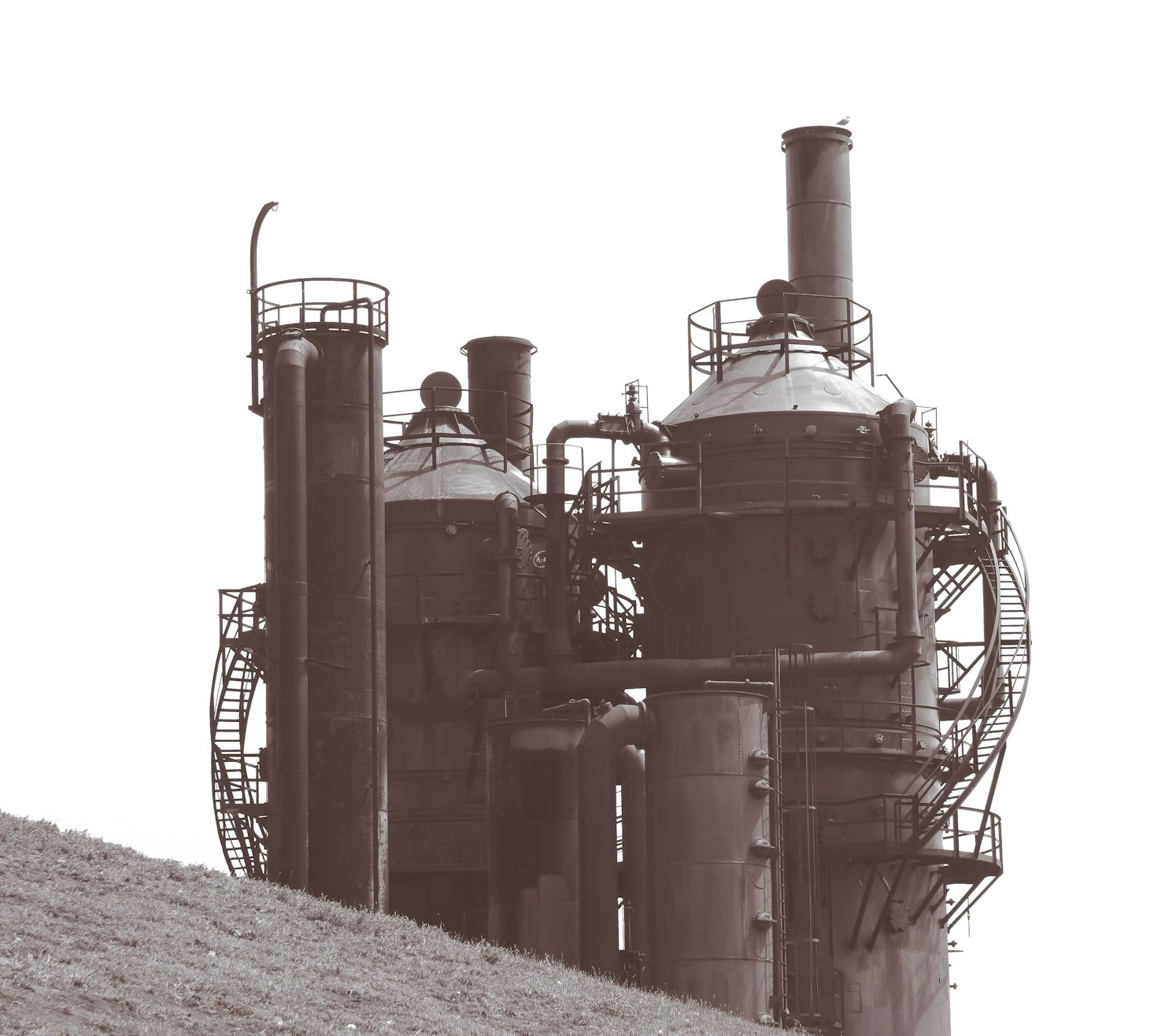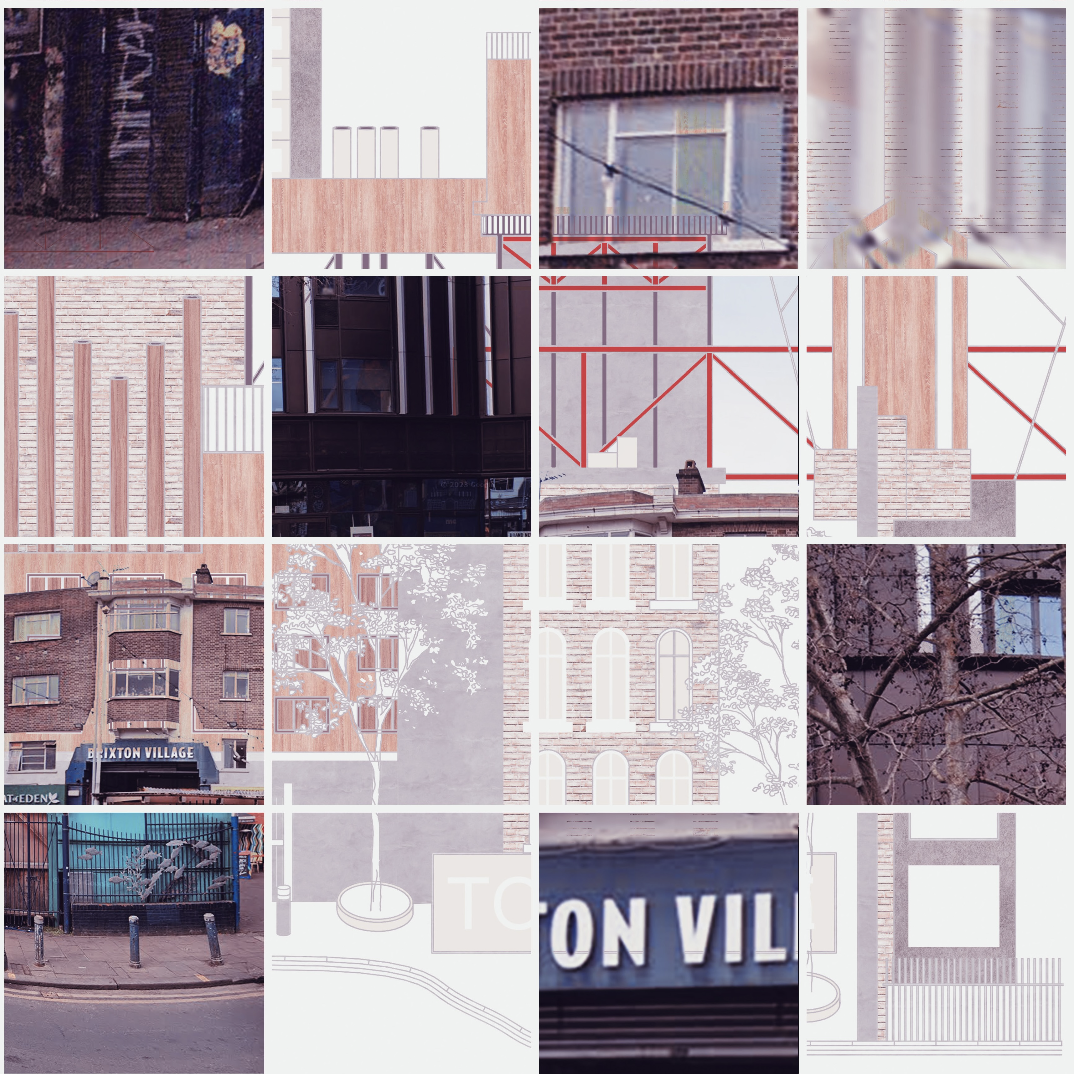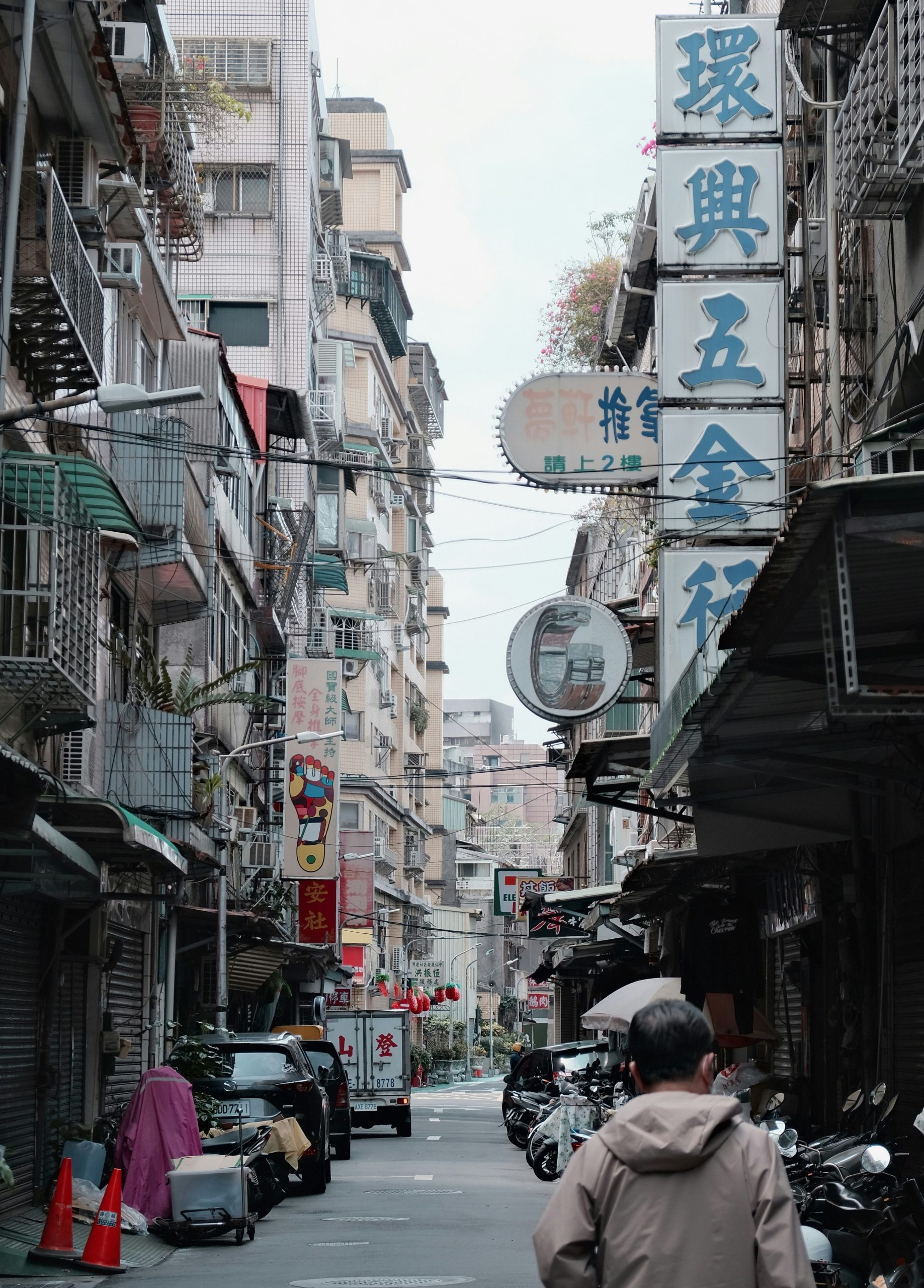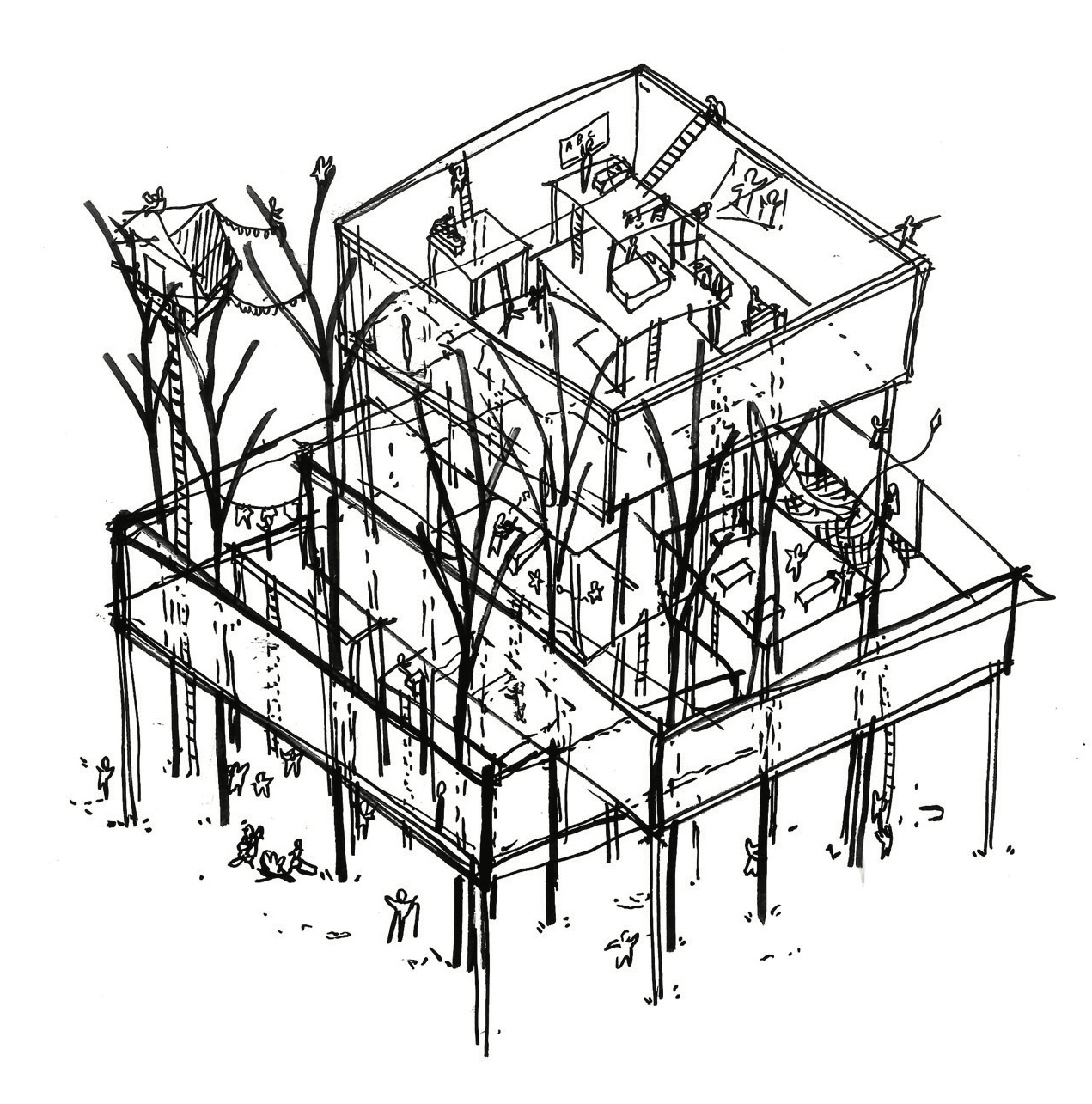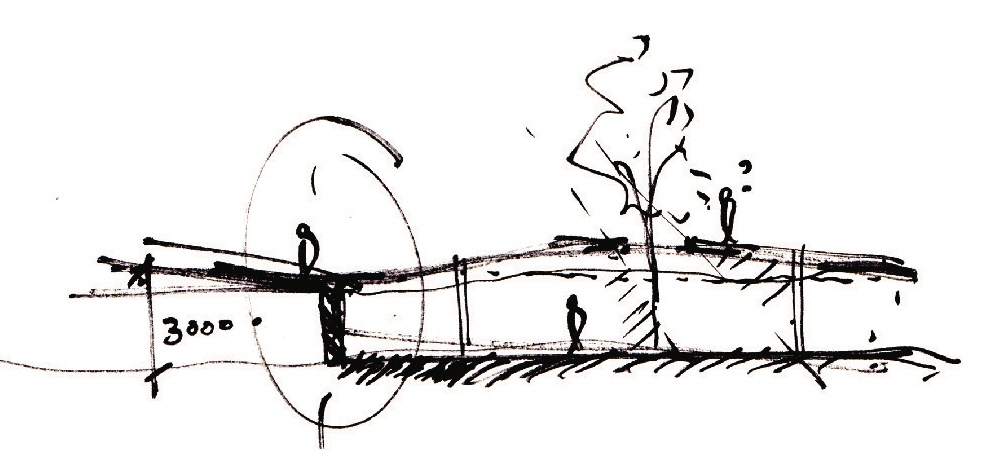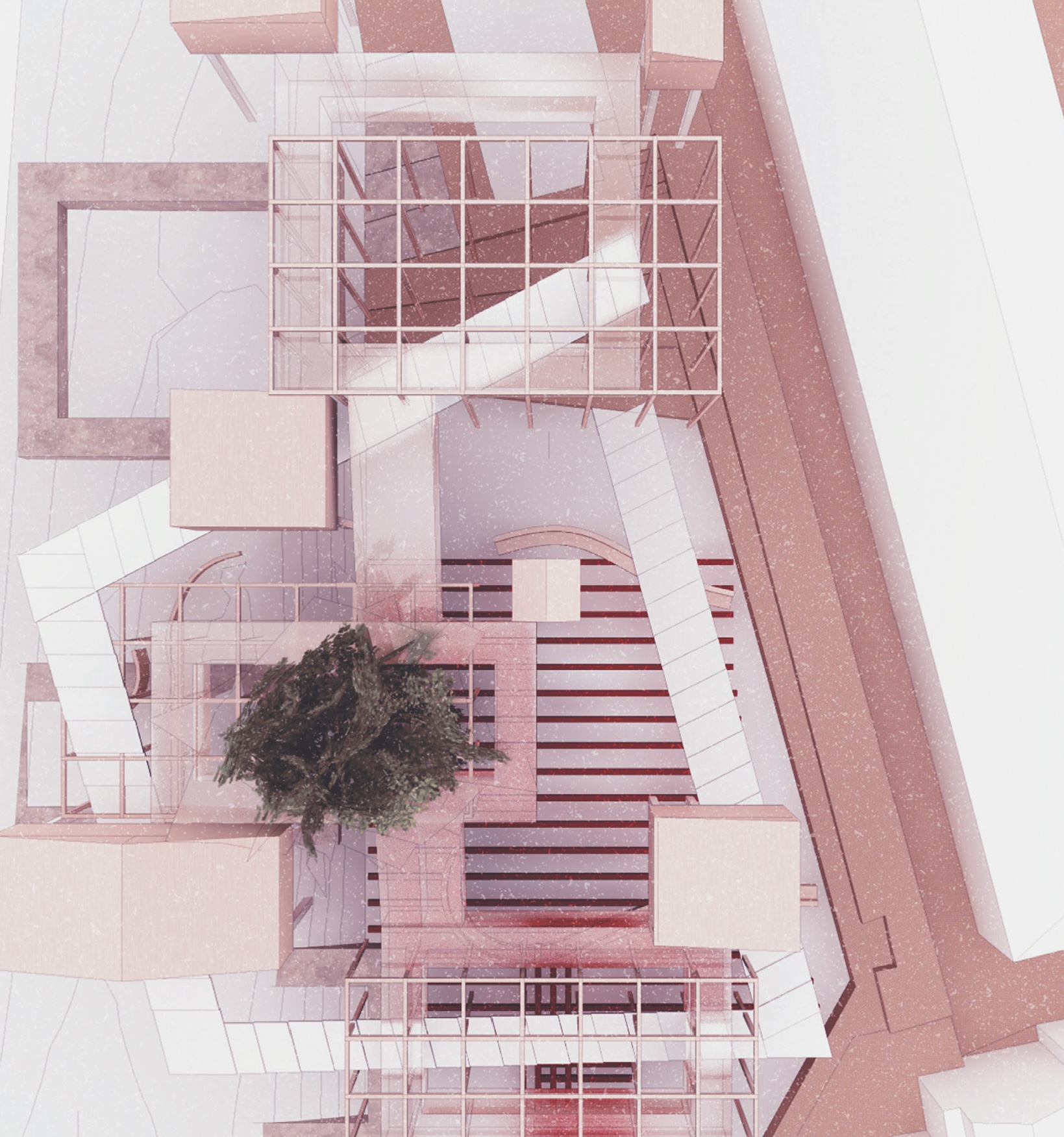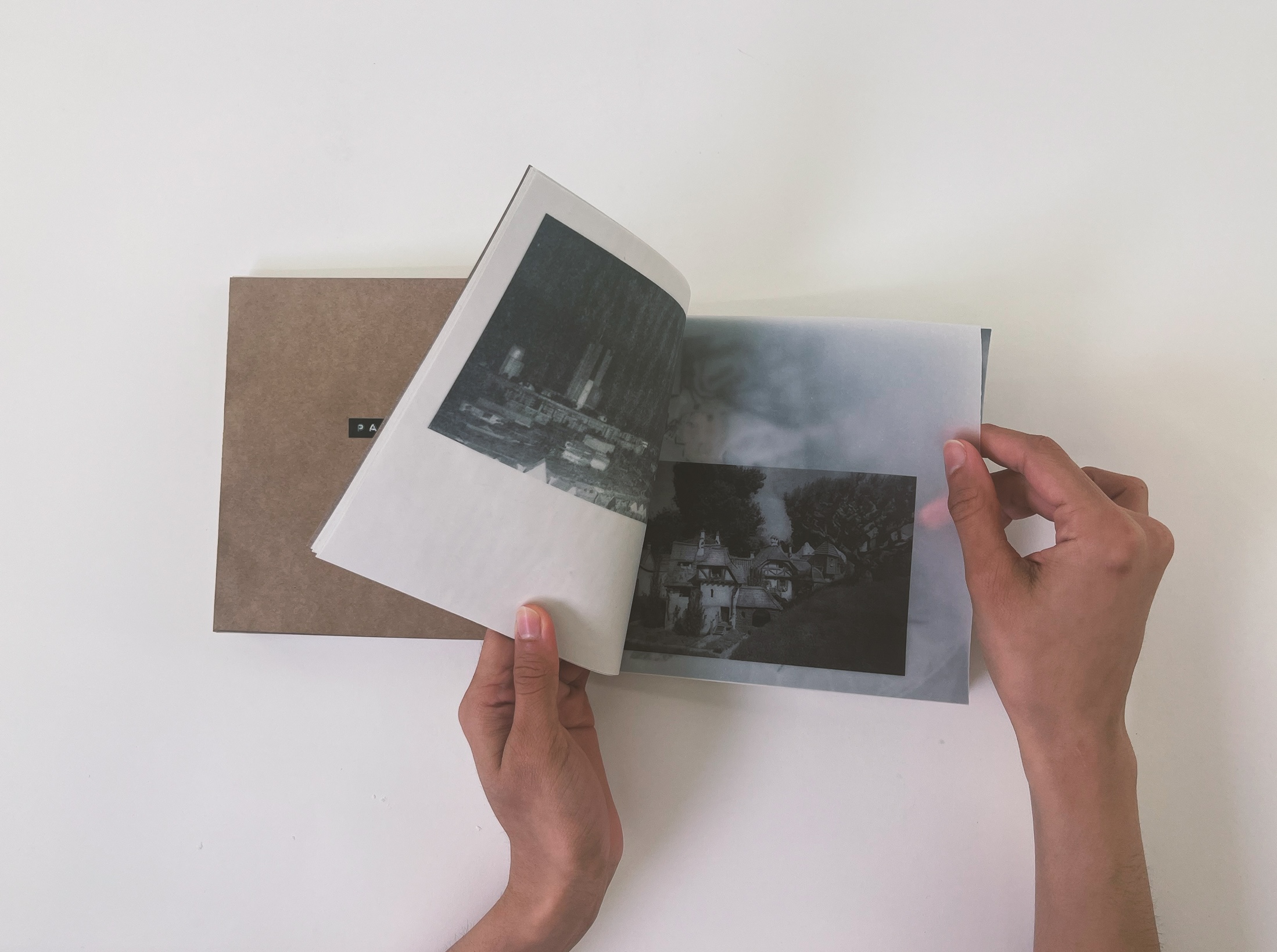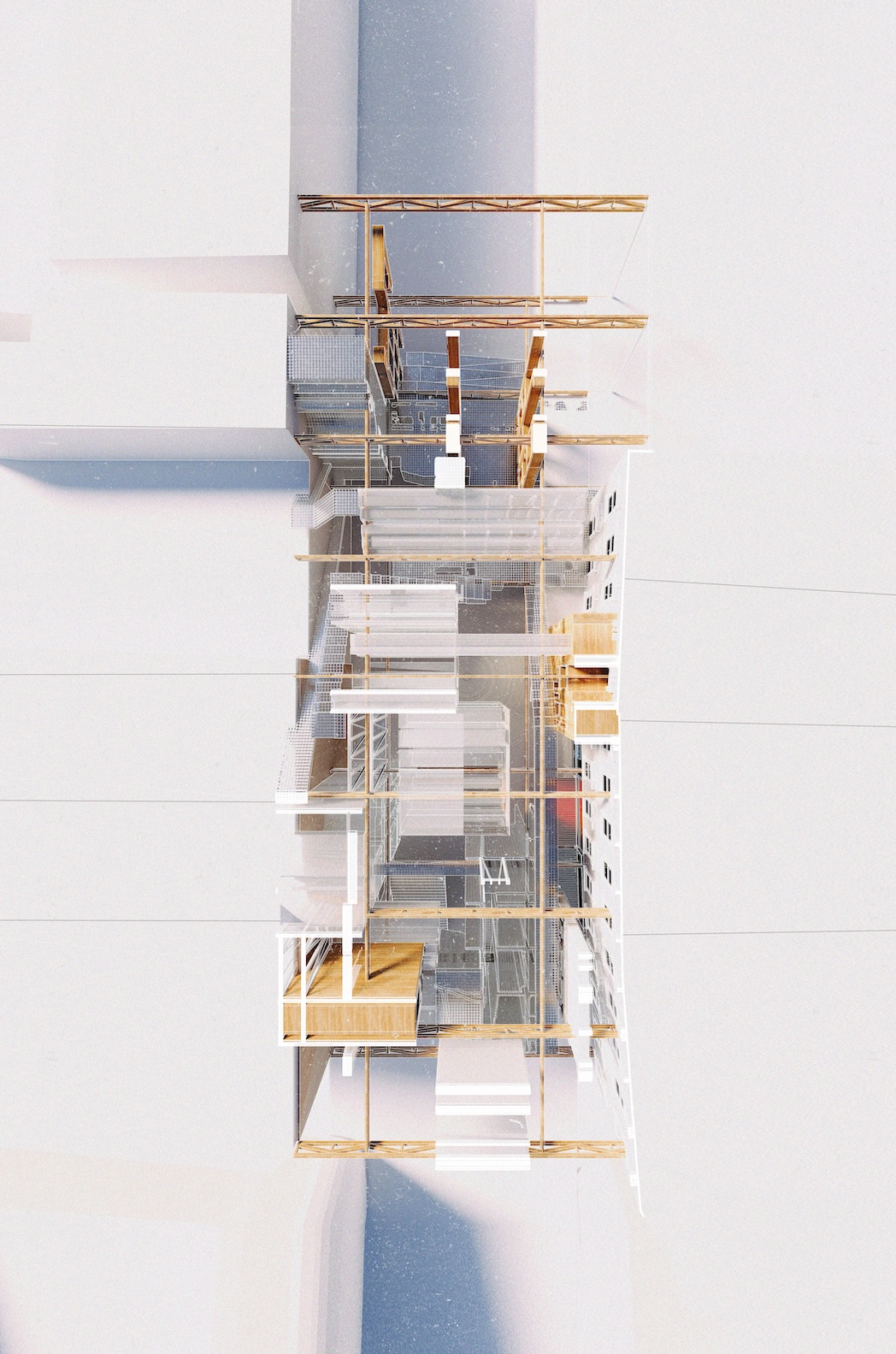Main image credit: Frantzou Fleurine via Unsplash
Richard Haag’s Gas Works Park (1962–75) in Seattle has often been described as one of the first projects to engage in the discourse and evolving knowledge of brownfield remediation of derelict industrial sites (Erdem and Nassauer, 2013, p. 285). This critical engagement in the ‘qualities of [these] sites and design interventions’ (Rahmann and Jonas, 2014, p. 97), although seemingly ecologically and programmatically sustainable, does present a wider set of issues in terms of gentrification and the contemporary discourse of environmental justice today. Kate Wagner (2020, p. 98) in the journal The Baffler describes a prevalent ‘fetishisation’ (often called ruin porn on various forms of social media) of this subversion of traditional beauty standards in the urban landscape, and its extension into issues of gentrification.
In this essay the history of the brownfield site will be first examined in its technical and ecological execution, with Gas Works Park as a main case study, and the core ideas of brownfield site remediation will be also examined in detail with emphasis on the continued remediation of historically industrial and highly polluted sites – how they sit in today’s landscape, urbanism, and discourse in social and environmental justice.
01. The history of Gas Works Park

Fig. 1: Aerial view of Gas Works Park, September 2011. (Matthies, 2011)
The site is a 20.5 acre old gas plant purchased by the City of Seattle in 1967 (Erdem and Nassauer, 2013, p. 285). Its past programme consisted of rubbish burning, and in the 50 years leading up to its purchase, gas manufacturing to supply Seattle by processing both coal and oil into gas (Cohen, 2018, p. 167). Eventually as the technology was deemed obsolete and outdated due to the cost of operation and manufacturing gas, the site closed in 1956, widely considered an ‘eyesore in the neighbourhood’ (Cohen, 2018, p. 167). The fact that the site was considered a ‘huge blot on an otherwise interesting and beautiful waterway’ (Kinslow, 1959)reinforces the disregard of ‘natural environment that was at the heart of the city’s success’, e.g. ‘logging, quarries, fishing and so forth’ (Way, 2013, p. 32).
The City of Seattle Department of Parks and Recreation now own and operate the site, and the current site as Gas Works Park, imagined and realised by architect Richard Haag, forefronted a radical reimagination of ‘toxic industrial space[s] into […] healthy public space[s]’ (Cohen, 2018, p. 170). The radicality lies in the site’s nature being amongst the first postindustrial waste landscapes to be adaptively reused for public enjoyment and not ‘merely ameliorating contaminated land’ (Way, 2013, p. 28). Haag’s retaining of the materiality and remains of the industrial apparatus was highly contested by the public, and his subsequent campaign for approval was driven by the site’s ‘geographic location, historic significance, and aesthetic resources’ (Cohen, 2018, p. 168). Haag envisioned ‘an urban area where users could extend their city experience instead of merely escaping from it’ (Cohen, 2018, p. 168) and engaged with the new emerging field of bioremediation as a resolution for the brownfield site and its histories.
However, the new language of postindustrial remediation and retention was not newly concepted with Haag’s proposal as there are a small number of nineteenth century alternatives, such as Jean-Charles Alphand’s Parc des Buttes-Chaumont, 1867, to the ‘deceitful’, ‘tightly orchestrated’ (Way, 2013, p. 30) tabula rasa, which had become the norm with proposals addressing brownfield landscapes by covering up and ‘making wastes invisible’ (Way, 2013, p. 28). The ‘deceitful’ describes design that ‘“covers up” human health risks and contamination’ (Erdem and Nassauer, 2013, p. 284), regardless of benign intent, concealing industrial history metaphorically and physically with a pastoral landscape. An example would be the 1939 World’s Fair in New York City where in 1936 the Corona landfill was covered over to create a new site for the fair (Way, 2013, p. 28).
The alternative language of postindustrial ruin coexisting peacefully with public use, albeit not entirely new, brought an opportunity for the practice of expressing modernity and urbanism, through ecological innovation alongside industrial character and its attached histories.
02. The ecology of remediating brownfield sites
The reclamation of a highly disturbed site such as the Gas Works Park and Haag’s methodology of engaging with the complexities of such a site required the site analysis tool of ‘thick sections’ described by Thaïsa Way (2013, p. 30) as ‘acknowledging the complex layers of history revealed in section’.

Fig. 2: View with postindustrial ruin and remediated hills, Gas Works Park, Seattle, WA. (Haag, no date)
Remediation was a visible dimension of the site’s identity – Haag successfully represented its industrial past and persuaded audiences to the site, often residents, that these industrial structures were a significant part of and responsible for Seattle’s successful growth as a city in the first half of the twentieth century which allowed Seattle to ‘prosper and expand’ (Way, 2013, p. 33). The complex nature of the tension between the postindustrial ruin and the almost pastoral artificial hills (see Fig. 2) inspire the imagination of visitors and long-term residents alike, ‘prompting questions about [the site’s] former use, and, thus, the longer history of the site’ (Way, 2013, p. 33).

Fig. 3: Haag’s employees look over newly delivered sawdust and organic matter that will be incorporated with contaminated soil. (Haag, 1979)
The contaminants in the site were heavily monitored because of the novelty of the project and prompted multiple revisitations and sampling of the contaminants. A significant point of the process was the remediation of the Great Mound or Kite Hill, where rubble that could not be recycled was placed in a large mound to form its base. It was covered with 18 inches of hard-packed clay, and its steep grade meant that rainwater flowed rapidly to break down the pollutants. The rainwater hence cleansed the soil in a ‘system that constantly revives itself’ (Way, 2013, p. 35). The contaminated soil was mixed with organic matter and sawdust (see Fig. 3) and successfully transformed into a planting medium, and ‘soil that had not hosted any vegetation in decades had in one summer became fertile’ (Way, 2013, p. 35). These methods of remediation and artificial rolling hills and mounds, revealed in both a user’s view and through sectional diagrams (Fig. 4) of the site, further strengthens the honesty of the site – the mounds are intentional constructions that would never be mistaken for untouched nature. The narrative of the sections and topography signal the complicated history of the site and its assertion of its industrial past.

Fig. 3: Tera Hatfield’s thick section, highlighting the industrial and urban histories of Gas Works Park’s narrative. (Hatfield, 2013)
03. Ruin Porn and the romanticisation of industrialisation
The dilapidated factory, crumbling and overgrown by vegetation, now inhabits that strange space between natural and man-made, historical and contemporary, lovely and sad (Wagner, 2020, p. 91).
In the anthology Terrain Vague: Interstices at the Edge of the Pale, Heike Rahmann and Marieluise Jonas (2014, p. 96) describe a ‘[difficulty] for architecture to find a meaningful approach to void spaces without falling back into common practice and focus on form generation, aesthetics, and productivity’. The transformation of derelict, abandoned spaces subverts natural qualities in the design of these spaces and embrace the ‘distinct character of roughness, ugliness, and otherness’ (Rahmann and Jonas, 2014, p. 97). With the rise of ruin porn in social media where over forty-two thousand images have been tagged #ruinporn (Wagner, 2020, p. 99), the paradigm and Vitruvian axioms of beauty are subverted. The modern-day perception of beauty shifts into, as John Patrick Leary describes in Guernica (2011), ‘[aestheticising] poverty without inquiring of its origins, [dramatising] spaces but never [seeking] out the people that inhabit and transform them, and [romanticising] isolated acts of resistance without acknowledging the massive political and social forces aligned against the real transformation, and not just stubborn survival, of the city’. Cultivating the ‘poetic image of industrial modernity being overtaken by nature’ (Wagner, 2020, p. 100) has led to the fetishisation of industrial ruin – an elevation of the ‘eyesore’ to art. The ‘deceit’ that tabula rasa once had translates in the modern day as cleanup, perhaps a remediation of sorts, of marginalised voices.
In recent scholarship such as The Political Economy of Environmental Justice, Spencer Banzhaf describes the phenomenon of ‘environmental gentrification’, where ‘commonsense remedies to environmental injustices’ (such as pollution, brownfield sites, etc.) increase the desirability of an area and harm existing renters by the increase in prices of real estate and only economically benefit landlords and homeowners (2020, p. 36). Given the limitations, the inevitability of the correlation between pollution and poor and minority households is revealed, and the primary beneficiaries of brownfield cleanup will be the households that move in or stay (Melstrom et al., 2022, p. 2). Environmental gentrification plays an intersecting role with the reality of ‘income inequality, housing discrimination, racism, and marginalisation from civic life’ (Melstrom et al., 2022, p. 2).
The study Who Benefits from Brownfield Cleanup and Gentrification? Evidence from Chicago examines questions related to neighbourhood change, household mobility and economic disparities (Melstrom et al., 2022, p. 4).
Our results provide some support for concerns about environmental gentrification: we find household willingness to pay (and ability to pay) for brownfield cleanup is highest when the householder is White, which essentially confirms claims that the economic benefits of land revitalisation flow disproportionately to Whites relative to other types of households (i.e. Black and Hispanic). We also find significant race group differences in willingness to pay to avoid neighbourhoods with vacant land as well as willingness to pay differences between owners and renters. (Melstrom et al., 2022, p. 3)
It is obvious that the development of Gas Works Park in the 60s did not consider fully these contemporary ideas of environmental justice or inequality as these ideas were only uncovered in contemporary scholarship and retrospective examination of the project. Gas Works Park can be seen as an embracing and reconciliation of industrial ruin and its complex histories, as seen in the careful execution Haag and his studio employed described in Section 02, rather than a surface fetishisation or glorification of ruin. However, the unintended consequences of environmental gentrification were not fully considered in the creation of the park. The embodied history contributes to and benefits a critical view of what the role of the park is today, but contemporary scholarship on environmental gentrification urges future remediation projects to engage in a more holistic, and careful interpretation of the wider effects of brownfield site cleanup.
04. Conclusion
The fetishisation of industrial ruin and the consequent erasure of marginalised voices leave industrial transformations, where brownfield site remediation falls under, to be a major factor in environmental gentrification. Shrouded under the greater good of ecological innovation in the 1960s shifting to the aestheticisation of today’s #ruinporn – benign in Gas Works Park and its historical context, but in the contemporary lens, a proponent of erasure both literal and metaphorical.
The romanticisation of the ‘ills and horrors of industrial production’ (Wagner, 2020, p. 100), and how subsequently they are cleansed and aestheticised for use by the non-marginalised are social issues often cast aside in large-scale cleanup and remediation projects. This fixation on overarching achievements of pure sustainability and ecological success greatly contributes to the disregard of these issues. Gas Works Park, although never purposefully contributing to today’s retrospective scrutiny over environmental gentrification, calls for a more critical examination and approach to the remediation of brownfield sites today, and the majorly overlooked sociopolitical ills of gentrification, erasure, and inequality.
Bibliography
Banzhaf, S. (ed.) (2020) The Political Economy of Environmental Justice. Stanford, CA: Stanford University Press. Available at: https://books.google.co.uk/books?hl=en&lr=&id=vSSKrxjcs60C&oi=fnd&pg=PA23&ots=eTYpwziOpW&sig=CfmeqmnG3ZBW7liZXXlZzO0Vbvw&redir_esc=y#v=onepage&q&f=false.
Cohen, S. (2018) The Sustainable City. New York: Columbia University Press.
Erdem, M. and Nassauer, J.I. (2013) ‘Design of Brownfield Landscapes Under Different Contaminant Remediation Policies in Europe and the United States’, Landscape Journal, 32(2), pp. 277–292.
Kinslow, Dr. and Mrs. J. L. (1959) ‘Letter to the Editor’, Seattle Times, 14 September.
Leary, J.P. (2011) ‘Detroitism: What does “ruin porn” tell us about the motor city?’, Guernica, 15 January. Available at: https://www.guernicamag.com/leary_1_15_11/ (Accessed: 22 November 2022).
Melstrom, R.T. et al. (2022) ‘Who Benefits From Brownfield Cleanup and Gentrification? Evidence From Chicago’, Urban Affairs Review, 58(6), pp. 1622–1651. Available at: https://doi.org/10.1177/10780874211041537.
Rahmann, H. and Jonas, M. (2014) ‘Void Potential: Spatial Dynamics and Cultural Manifestations of Residual Spaces’, in M. Mariani and P. Barron (eds) Terrain vague: interstices at the edge of the pale. First edition. New York: Routledge, pp. 89–104.
Wagner, K. (2020) ‘Staring at Hell’, The Baffler, (49), pp. 88–101.
Way, T. (2013) ‘Landscapes of industrial excess: A thick sections approach to Gas Works Park’, Journal of Landscape Architecture, 8(1), pp. 28–39. Available at: https://doi.org/10.1080/18626033.2013.798920.
List of Figures
Fig. 1 – Matthies, L. (2011) Aerial Gas Works Park September 2011. Available at: https://commons.wikimedia.org/wiki/File:Aerial_Gas_Works_Park_September_2011.jpg.
Fig. 2 – Haag, R. (no date) Gas Works Park, Seattle, WA. Available at: http://richhaagassoc.com/studio/projects/gas-works-park/ (Accessed: 22 November 2022).
Fig. 3 – Haag, R. (1979) Haag’s employees look over newly delivered sawdust and organic matter that will be incorporated with contaminated soil. Available at: https://interactive.wttw.com/ten/parks/gas-works-park (Accessed: 10 January 2023).
Fig.4 – Hatfield, T. (2013) Thick section of Gas Works Park. Available at: http://www.ecole-paysage.fr/media/ensp_fr/UPL1603014534348881777_jola15_way_v02.pdf (Accessed: 10 January 2023).
